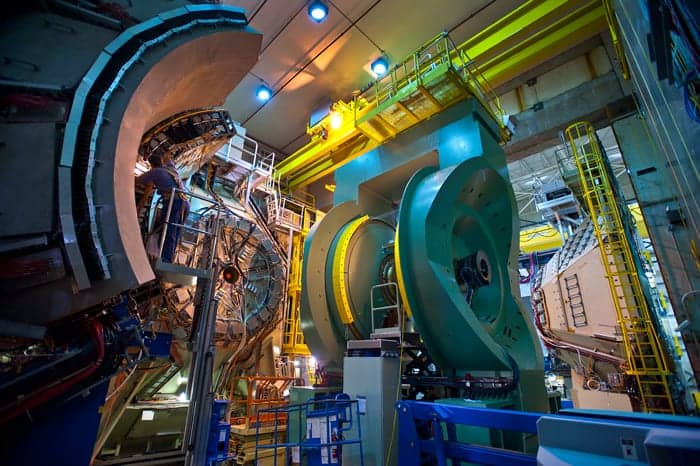Gluons account for much more pion momentum than previously thought
19 Oct 2018
Gluons contribute around 30% to the total momentum of energetic pions, which is about three times more than previously estimated. The research was done by a team led by Chueng-Ryong Ji at North Carolina State University in the US. They deduced the fraction by combining data gathered by two previous studies that took different approaches to exploring the interior structures the particles.

Pions are the lightest members of the meson family. An individual pion comprises a quark and an antiquark, one of which has up flavour and the other down flavour. Yet this description is overly simplistic because the quark-antiquark pairs are embedded in a sea of “virtual” quarks and antiquarks which appear and disappear instantaneously. The quarks and antiquarks also interact with each other through the strong force by continuously exchanging gluons. However, calculating the precise internal properties of pions and other hadrons is extremely difficult and so physicists have not had a good understanding of the contributions of gluons to pion momenta.
In the 1980s, researchers first explored the interiors of pions by observing how pairs of leptons are created when the mesons are scattered by atomic nuclei at high energies. These studies suggested that gluons contributed around 10% to total pion momenta, but the lack of available data for low-momentum pions meant this value was highly uncertain.
Low momenta
Later studies in the 2000s used data from the now defunct HERA particle accelerator at DESYin Hamburg, Germany to study pion compositions at lower momenta. This involved colliding together protons and electrons to form neutrons – a process which involves exchanges of low-momentum pions at certain collision energies and neutron production angles.READ MORE

In their new study, Ji’s team combined the results gathered by both approaches to obtain a value for the gluon momentum contribution over a wide range of pion momenta. To do this, the researchers first constructed distribution functions which approximated the probabilities of finding gluons of certain momenta within a pion; incorporating the mathematics underlying both previous approaches into their probability curves. Next, Ji and colleagues performed analyses on random samples of these distribution functions, allowing them to estimate gluon momentum contributions for both low- and high-momentum pions.
The team found that with both approaches incorporated into their analysis, gluons carry a fraction of around 30% of total pion momentum – around three times higher than previously thought. At the same time, they concluded that the seas of virtual quarks surrounding quark-antiquark pairs carry around 15% of the momentum – a slightly lower percentage than thought previously. In the future, Ji’s team hope that new data on pion compositions will allow them to further constrain their analytical methods, allowing them to explore the internal structure of pions in yet more detail.
The study is described in Physical Review Letters.
21/10/2018 from physicsworld.com

Δεν υπάρχουν σχόλια:
Δημοσίευση σχολίου